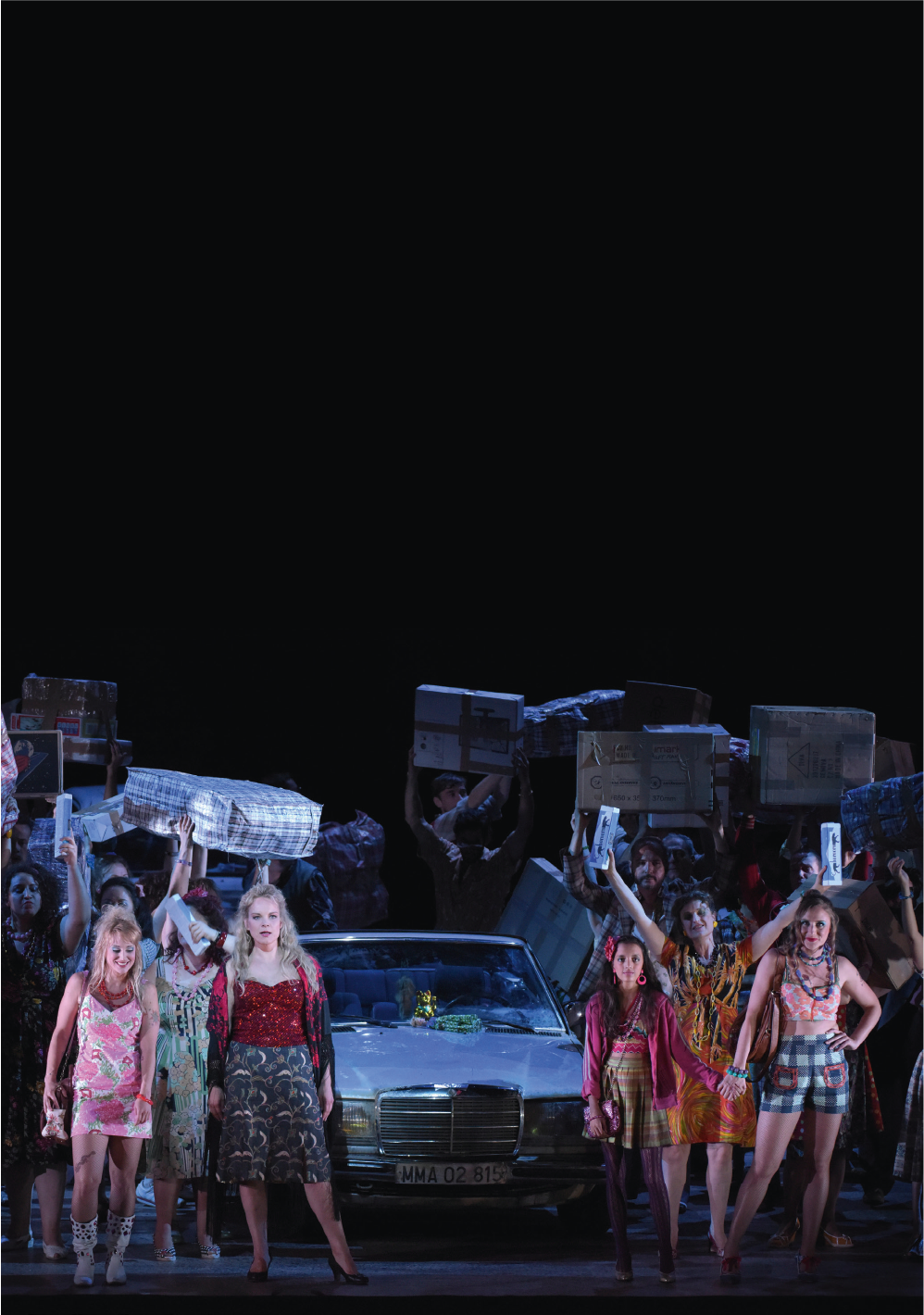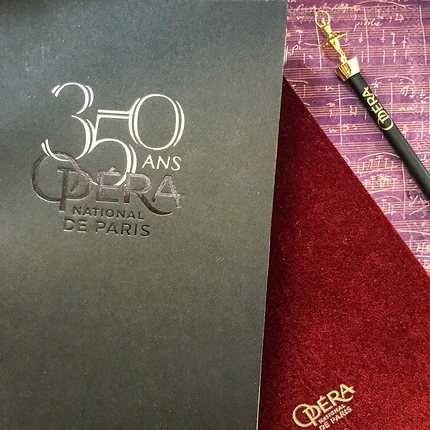Synopsis
Raymonda, which premiered in 1898 at Saint Petersburg’s Mariinsky Theatre to Alexander Glazunov’s scintillating score, was Marius Petipa’s quintessential narrative ballet. A genuine medieval fantasy today regarded as an encyclopaedia of classical dance forms, the work depicts the love story of the young Raymonda and the knight Jean de Brienne in the face of the covetous desires of the Saracen chief Abderam. Long unknown outside Russia, the ballet was staged several times by Rudolf Nureyev after he defected to the West. The choreographer gave it his final touch in 1983 when he became Director of the Paris Opera Ballet. Associating it with Nicholas Georgiadis’s sumptuous sets and costumes, Nureyev recreated all the Eastern charm of a romantic fresco to a backdrop of the mythicized echoes of the crusades.
Duration : 3h07 with 2 intervals
-
Opening
-
First part 71 min
-
Intermission 20 min
-
Second part 40 min
-
Intermission 20 min
-
Third part 36 min
-
End
Artists
Ballet in three acts - Sujet de Lydie Paschkoff and Marius Petipa
After Marius Petipa
Creative team
Cast
- Monday 02 December 2019 at 19:30
- Tuesday 03 December 2019 at 19:30
- Thursday 05 December 2019 at 19:30
- Friday 06 December 2019 at 19:30
- Sunday 08 December 2019 at 14:30
- Monday 09 December 2019 at 19:30
- Tuesday 10 December 2019 at 19:30
- Thursday 12 December 2019 at 19:30
- Friday 13 December 2019 at 19:30
- Sunday 15 December 2019 at 14:30
- Monday 16 December 2019 at 19:30
- Wednesday 18 December 2019 at 19:30
- Thursday 19 December 2019 at 19:30
- Saturday 21 December 2019 at 14:30
- Saturday 21 December 2019 at 20:00
- Sunday 22 December 2019 at 14:30
- Tuesday 24 December 2019 at 19:30
- Wednesday 25 December 2019 at 19:30
- Friday 27 December 2019 at 19:30
- Saturday 28 December 2019 at 19:30
- Sunday 29 December 2019 at 19:30
- Monday 30 December 2019 at 19:30
- Tuesday 31 December 2019 at 19:30
Latest update 03 December 2019, cast is likely to change.
Latest update 03 December 2019, cast is likely to change.
Latest update 03 December 2019, cast is likely to change.
Latest update 03 December 2019, cast is likely to change.
Latest update 03 December 2019, cast is likely to change.
Latest update 03 December 2019, cast is likely to change.
Latest update 03 December 2019, cast is likely to change.
Latest update 03 December 2019, cast is likely to change.
Latest update 03 December 2019, cast is likely to change.
Latest update 03 December 2019, cast is likely to change.
Latest update 03 December 2019, cast is likely to change.
Latest update 03 December 2019, cast is likely to change.
Latest update 03 December 2019, cast is likely to change.
Latest update 03 December 2019, cast is likely to change.
Latest update 03 December 2019, cast is likely to change.
Latest update 03 December 2019, cast is likely to change.
Latest update 03 December 2019, cast is likely to change.
Latest update 03 December 2019, cast is likely to change.
Latest update 03 December 2019, cast is likely to change.
Latest update 03 December 2019, cast is likely to change.
Latest update 03 December 2019, cast is likely to change.
Latest update 03 December 2019, cast is likely to change.
Latest update 03 December 2019, cast is likely to change.
Orchestre de l’Opéra national de Paris
Les Étoiles, les Premiers Danseurs et le Corps de Ballet de l’Opéra
8 Dec. 2019 : Matinée « Rêve d’enfants »
Ticket prices and bookings for this date only : +33 1 58 18 65 10
revedenfants.fr
Media
Access and services
Opéra Bastille
Place de la Bastille
75012 Paris
Public transport
Underground Bastille (lignes 1, 5 et 8), Gare de Lyon (RER)
Bus 29, 69, 76, 86, 87, 91, N01, N02, N11, N16
Calculate my routeIn both our venues, discounted tickets are sold at the box offices from 30 minutes before the show:
- €25 tickets for under-28s, unemployed people (with documentary proof less than 3 months old) and senior citizens over 65 with non-taxable income (proof of tax exemption for the current year required)
- €40 tickets for senior citizens over 65
Get samples of the operas and ballets at the Paris Opera gift shops: programmes, books, recordings, and also stationery, jewellery, shirts, homeware and honey from Paris Opera.
Opéra Bastille
- Open 1h before performances and until performances end
- Get in from within the theatre’s public areas
- For more information: +33 1 40 01 17 82
Online
Opéra Bastille
Place de la Bastille
75012 Paris
Public transport
Underground Bastille (lignes 1, 5 et 8), Gare de Lyon (RER)
Bus 29, 69, 76, 86, 87, 91, N01, N02, N11, N16
Calculate my routeIn both our venues, discounted tickets are sold at the box offices from 30 minutes before the show:
- €25 tickets for under-28s, unemployed people (with documentary proof less than 3 months old) and senior citizens over 65 with non-taxable income (proof of tax exemption for the current year required)
- €40 tickets for senior citizens over 65
Get samples of the operas and ballets at the Paris Opera gift shops: programmes, books, recordings, and also stationery, jewellery, shirts, homeware and honey from Paris Opera.
Opéra Bastille
- Open 1h before performances and until performances end
- Get in from within the theatre’s public areas
- For more information: +33 1 40 01 17 82
Online
You will also like























































































